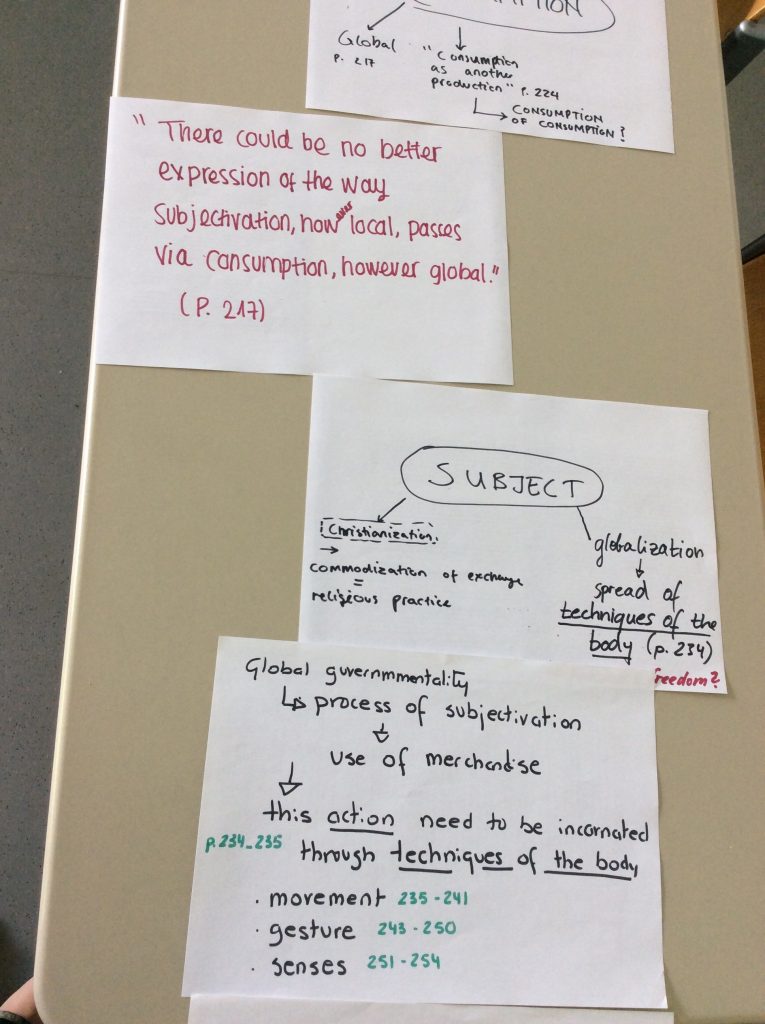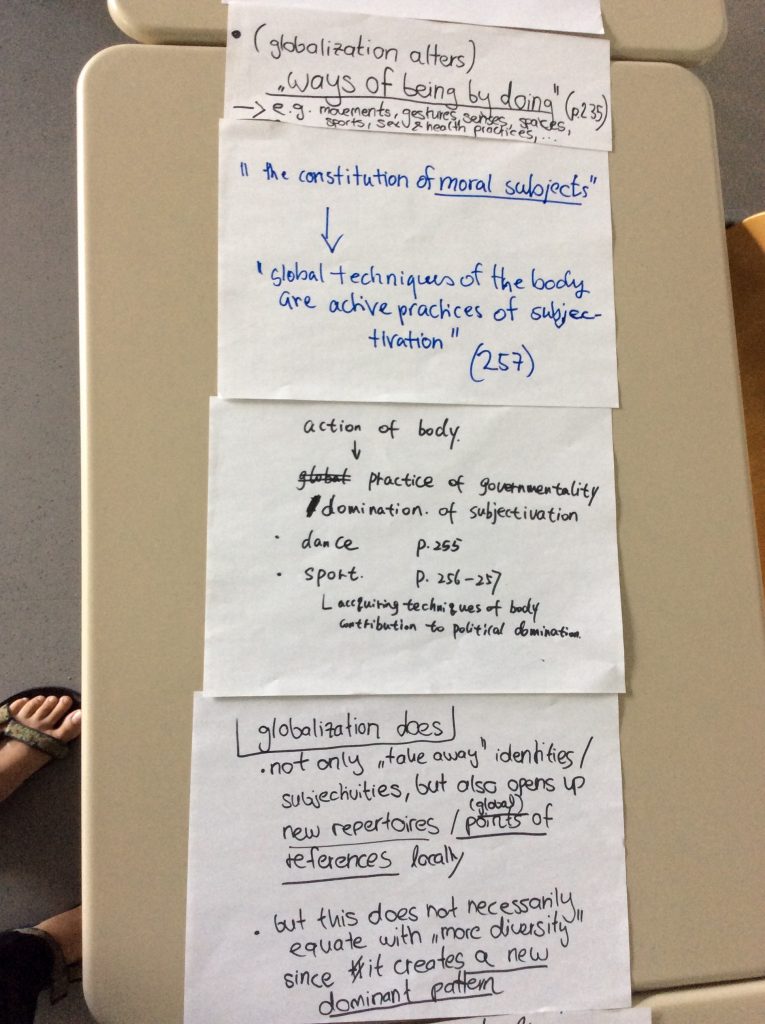The semester progresses awfully quickly – we have now almost completed the second phase! This, of course, means that it is high time to decide what we will read in our last phase, which focuses on
The subject and technology
I have chosen this focus because I believe it covers an increasingly important aspect of our lives. Technologies of all kinds are all around us and their influence on our lives is much bigger than we care to admit. But what exactly is that influence? What chances as technology evolves? Although this is, as the selection of texts shows, not an entirely new question, political thinking about these issues is still too rare.
Here is an eclectic, alphabetic list of possible readings and session topics. At the end of the post, there is a link to the vote – and some questions regarding the seminar.
Posthumanism might – or might not – be something to look out for. It has been discussed as one of the conceptions that challenge modern notion of humanism and human nature. Badmington’s article places post-humanism in context to postmodern thought and would allow us to discuss the idea in relation to our earlier readings. I would welcome the opportunity to dive into something I haven’t worked on a lot.
This text is somewhat of a classic in the area. Haraway connects feminist, socialist and technological ideas in order to come to a new idea of who we are/can be. It was written long before many of the technologies that we use every day became common place but already shows great insight into the possibilities digitization has created since the 1960ies. We may also find some unlikely parallels to the Zapatistas.
Heidegger: A Question Concerning Technology (requires two sessions!)
I have already said a lot on Heidegger. It is important to note, that technology here is not such restricted term, in fact, one of the major plot twists is Heidegger’s description of modernity in terms of the rise of technology. His concern is what this does to us as humans – and his prospect is bleak and not without hope at the same time. To take this all apart, we should spend at least two sessions on approaching Heidegger, but I have no doubt, that you will find it rewarding. Also, 20th century political thought seems to me to “breath” Heidegger, making this text in many ways fundamental, as it incorporates many on the main elements of Heidegger’s thought in one text. This, of course, is also what makes it a difficult text… [The link links to the whole book, we would only be reading the essay with the title!]
Latour is a sociologist and founding figure of what has become known as ANT (Actor-network-theory), a somewhat sidelined and – according to its proponents misnamed – strand of Science and Technology Studies. The innovation here, in short, lies in conceptualizing objects as actors and analyzing networks of actors, human and non-human, also called associations. This raises some interesting perspectives. The text I propose focuses on power and associations and may offer some interesting additions to the power debates we have already had in class.
In her book, which only came out this year, Lupton looks at contemporary practices of self-tracking. As a sociologist she describes the ways in which people use these techniques and the purposes they associate with these uses. For us, this could be an interesting perspective, as we might consider these self-tracking techniques as potential examples of Foucauldian power mechanisms as well as of technologies of the self.
Simple, virtuality and identity would be the main subjects of this session. Turkle has been writing on the self and technology for at least thirty years, done very extensive, empirical research and had great influence on the debate. Also, she has changed her mind and that is always a quality to look out for. This book focuses just our questions and we would be reading, of course, an excerpt and not the whole thing. If you want to see her and her most recent ideas, check out this video
VOTING
Please follow this link, answer two questions and then select THREE topics for the last sessions. (Heidegger will only be selected, if he comes first or second in this vote, as this text requires 2 sessions). This poll is open until Friday morning (June 17, 2016) and it is anonymous.
Comments on the selection and arguments for certain topics for your colleagues (so they vote your way!) are welcome in the comments section.











 Die
Die